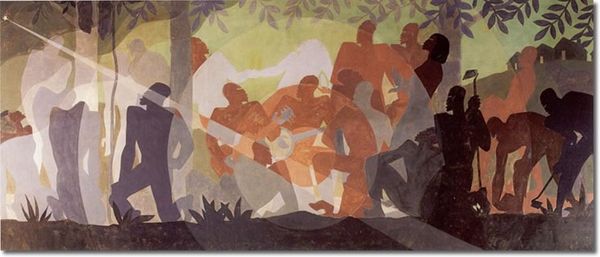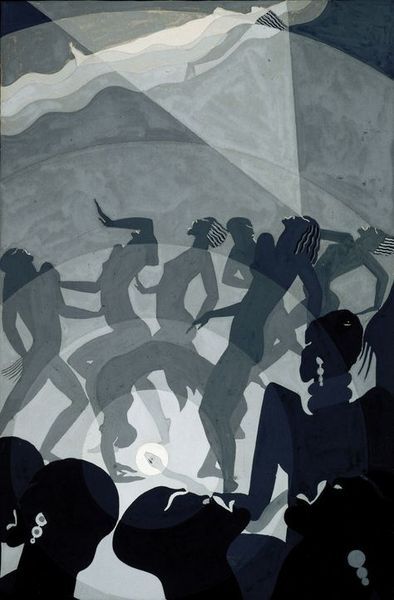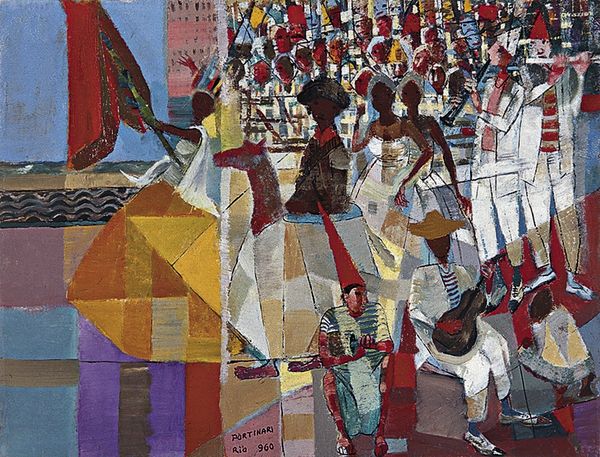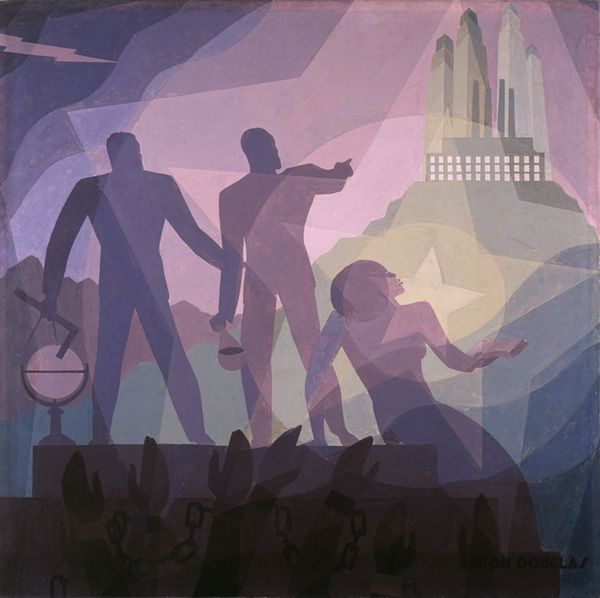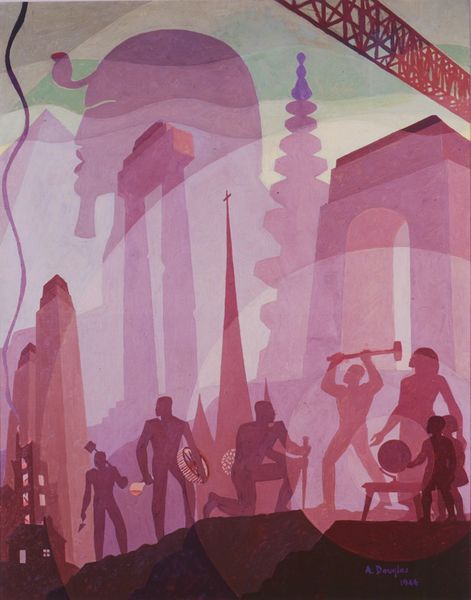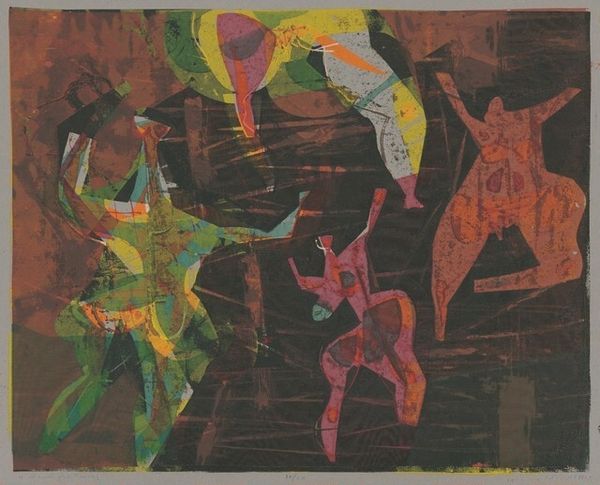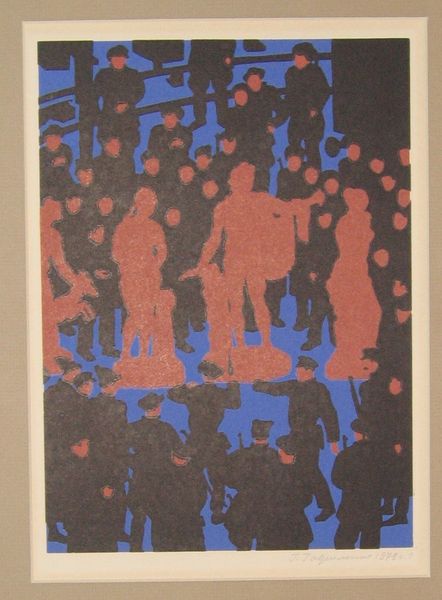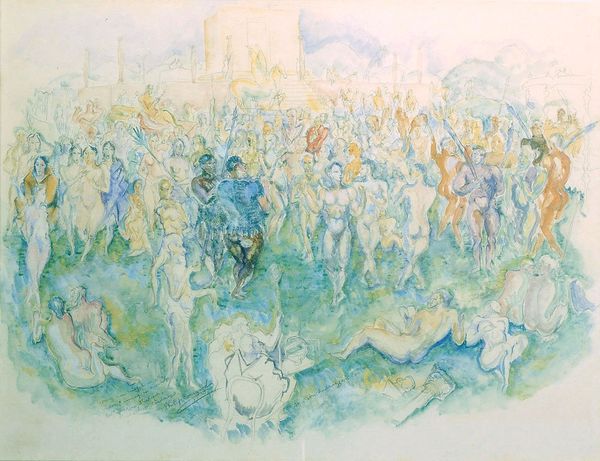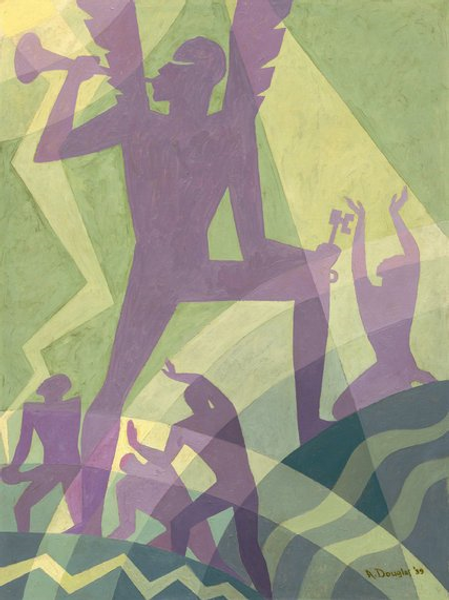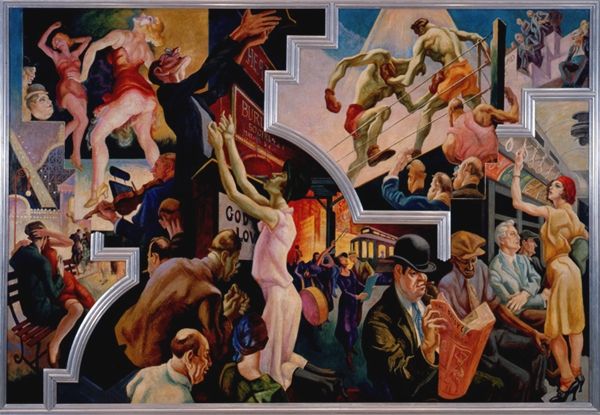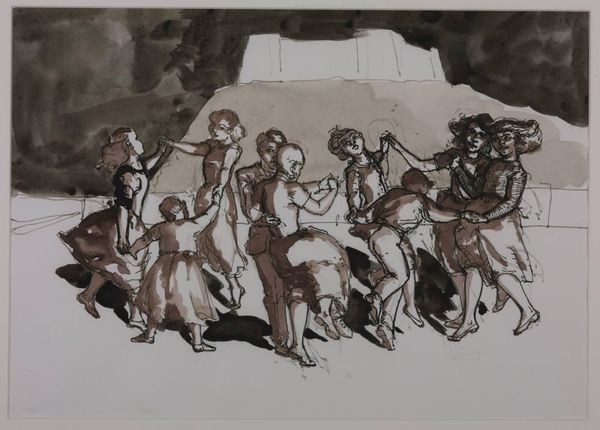
tempera, painting, mural
#
narrative-art
#
tempera
#
painting
#
harlem-renaissance
#
figuration
#
social-realism
#
handmade artwork painting
#
painting art
#
history-painting
#
mural
Copyright: Aaron Douglas,Fair Use
Curator: Standing before us is Aaron Douglas's striking tempera painting, "From Slavery Through Reconstruction," created in 1934. It's a mural-sized work that's a powerful statement about Black history. Editor: The sepia tones create a kind of visual echo of old photographs. It lends this really poignant atmosphere to the composition. Curator: Absolutely. Douglas, a major figure in the Harlem Renaissance, uses this visual language to portray the struggles and triumphs of African Americans, starting with the harrowing reality of slavery. Notice the figures to the left, bent under the weight of their burdens in the cotton fields. Editor: The rhythm of the repeating figures evokes both the monotony and the physical hardship they endured. I see the concentric circles that radiate throughout the painting, visually linking the different historical moments that are shown. Curator: Yes, that's Douglas’s signature style. Those concentric circles emphasize a sense of movement and connectivity, showing how events reverberate through time. In the center, a figure stands tall, seemingly an orator or leader pointing towards a new direction. This shift highlights Reconstruction-era progress. Editor: I appreciate how the geometric shapes make this complex subject accessible. Douglas distills forms into planes. It feels very modern, in terms of abstraction. Curator: Douglas aimed for accessibility in his public art. His art was socially engaged, and he used murals like this one to educate and inspire his audience during a critical period of American history. It’s a part of a series about Black achievement. Editor: Looking closely, one cannot deny the enduring narrative this painting carries—oppression, resilience, and then, the hopeful ascent into reconstruction. Curator: Douglas used his artistic voice to contribute meaningfully to the political and cultural landscape of his time. The visual language is so powerful in the narrative that the painting is relating. Editor: Its masterful synthesis of form and subject really does amplify the power and the perseverance embedded within this narrative.
Comments
No comments
Be the first to comment and join the conversation on the ultimate creative platform.
